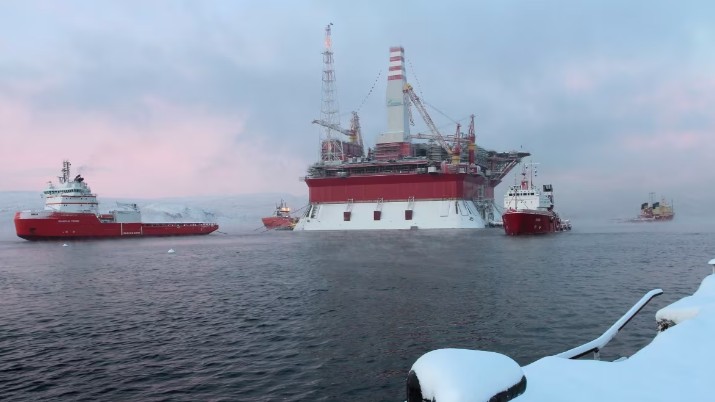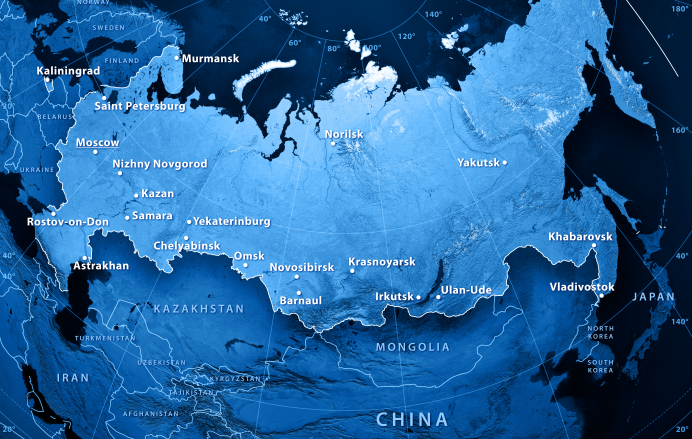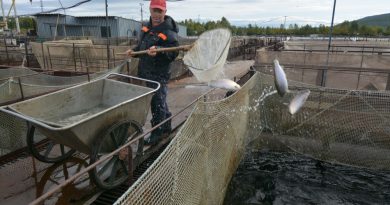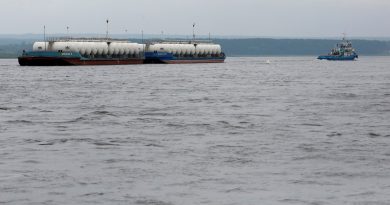Ships break through the Yenisey, unload 4,600 tons of oil pipes on the ice

Two ships at the same time docked in the thick sea-ice of the Yenisey River to deliver construction parts to Russia’s biggest Arctic project, the Vostok Oil.
It was the first time ever that two ships conducted simultaneous unloading of its cargo in the ice, Atomflot informs. The nuclear icebreaker operator had two of its powerful vessels on site. The “Ural” and “Taymyr” were both involved in the escort of cargo ships “Utrenny” and “Grigory Shelikhov.” In addition, diesel-powered icebreaker “Admiral Makarov” was engaged.
A total of 4,600 tons of cargo was put on the river ice and subsequently transported on snow roads to nearby project development sites.
A key part of the cargo was oil pipes for the pipeline trunk connection to the Sever Bay oil terminal. Also housing modules and belt vehicles were part of the shipment.
It is a highly complicated operation for the ships involved. The ship pilots must work with a high level of accuracy and failed movements could have irreversible consequences, Atomflot informs.

It is not the first shipment of the kind to the ice terminal of Tanalau. In February this year, a first vessel docked on site. Later this year, also the two nearby terminals of Karaul and Vorontsevo will be applied, project operator Vankorneft informs.
In total, Rosneft will take use of 16 terminal sites along the Yenisey in connection with its development of Vostok Oil. They will handle more than 300,000 tons of winter-time shipments.
The Vostok Oil is the biggest industrial project currently under development in Russia. It includes more than 50 license areas in the Taymyr Peninsula. By year 2030, as much as 100 million tons of oil per year is to be extracted from site.
The project has spurred concern among environmental organizations and indigenous peoples. Oil installations and infrastructure will make unprecedented industrial impact on the vulnerable Arctic environment and experts fear that there is a significant risk of accidents and oil spills because of the harsh weather conditions in the area. Spills could inflict irreparable damage on the local environment, Greenpeace said.
Related stories from around the North:
Canada: Arctic Canadian community says oil moratorium renewal doesn’t go far enough, Eye on the Arctic
Norway: Equinor postpones decision on northernmost oil field, The Independent Barents Observer
Russia: Russian Arctic coal is looking for way out of sanctions, The Independent Barents Observer
Sweden: Will the green transition be the new economic motor in the Arctic?, Eye on the Arctic



